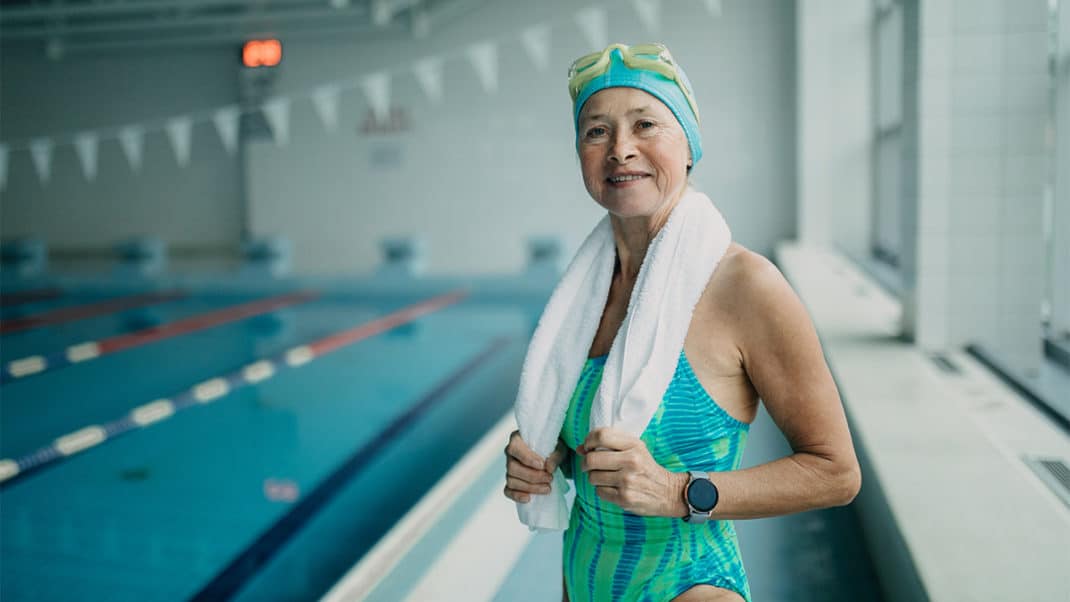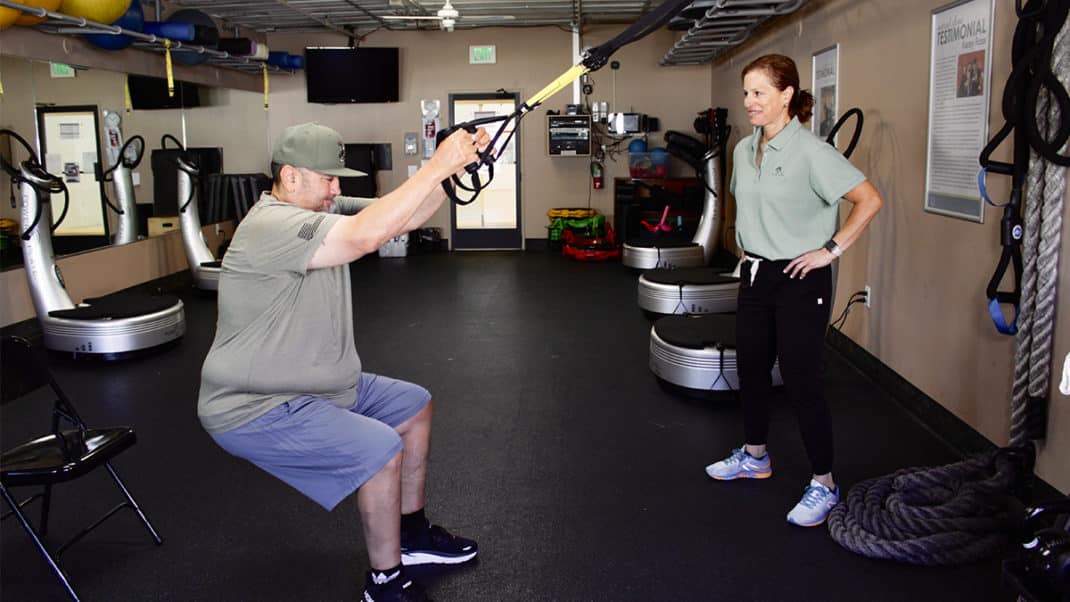Blazing New Trails in Fitness
IDEA member William Malmskog helps disabled people take charge of their fitness and their lives.
Talk to William Malmskog, and his enthusiasm for life leaps out at you. Although he’s weathered his share of challenges, his joyous energy and passion for helping others are contagious.
When William lost part of one leg in 2000 after suffering an injury as a film stuntman, he refused, as he puts it, to “curl himself up into a ball and give up.” He rebounded from his several surgeries and is dedicated to serving others through his work as a personal trainer, a fitness educator, an athlete, a firefighter, an advocate for disabled people and the founder of the Amputee Firefighter Association™.
Before his injury, Malmskog was a Screen Actor’s Guild stuntman and had worked on movies and television shows such as Walker, Texas Ranger and Buffy the Vampire Slayer. Then, during a stunt, the combined weight of a 300-pound fellow stuntman and his own 185 pounds fell on Malmskog’s leg. The pain was horrendous, and he ended up needing to have the limb amputated below the knee.
After the injury, Malmskog was determined to lead an active life. A former Texas firefighter, paramedic and deputy sheriff, he applied to work as a part-time firefighter in his home community of Big Bear, California. “When I moved to Big Bear, I saw all the large pine trees and houses made of wood and thought of the fire risks,” he says. “I went to the local fire station and asked the station chief if he needed any help. After explaining my qualifications, I said, ‘Oh, and there’s one other thing you should know,’ and I showed him my stump. The chief looked at me and just said, ‘Can you do the job?’ I felt fortunate he gave me a chance, and I became the first amputee city/wildland firefighter in California history.”
Unfortunately, a surgical revision for his stump went really wrong and he spent over a year in a wheelchair. Finally, insurance approved a second revision which, at last, corrected his pain. He got out of the wheelchair just in time to fight the 2003 Southern California firestorm.
After Malmskog had his leg amputated, other amputees asked him for fitness advice because of his background as a firefighter and a power lifter. “I went to the Cooper Institute and became certified as a personal fitness trainer,” he says. “My first day in class I thought I’d know everything, but I ended up taking notes like a madman. I came back and adjusted my own training program and, as I was asked by others, began sharing my experiences.”
He started working as a trainer for 24 Hour Fitness, went through its certification program and learned even more. “I trained many able-bodied clients. However, after articles on me appeared [in print], disabled people started coming in and asking to work with me.”
After the second revision to his leg, he started his own business, Paleo Fitness, and now trains clients in their homes and offices. Malmskog loves his work as a trainer. “By and large, most personal trainers have no clue as to how to work with disabled clients,” he says. “Amputees often run into common problems. If someone isn’t able to perform a traditional exercise because of physical limitations, I can figure out how to do it differently.”
Malmskog has consulted for gym owners to help make their facilities disability-friendly and has visited people who’ve lost limbs. “If someone has a body part amputated, usually some well-meaning nurse comes in and pats him on the shoulder and says, ‘You need to take it easy,’” he says. “For an active person this is like a death knell, because the person wants to give up. I come in and say, ‘You lost your leg, but not your head, heart and soul.’ After an experience like losing a leg, people will either give up or get mad and say, ‘I want my life back.’ I like to inspire them to get up and get active.”
To motivate people with disabilities, he conducts “Disability and Fitness” seminars for the Challenged Athletes Foundation and PossAbilities programs. “Often after a disability, people put on weight because their activity level has changed but their eating habits haven’t. I talk to them about exercise and nutrition.”
Malmskog also helps people through the Amputee Firefighter Association. “We provide nationwide advocacy, mutual support and peer mentoring for any firefighter, emergency medical and law en-forcement personnel who have suffered or will suffer a limb loss,” he says. “Many of these people want their old jobs back but have trouble getting them. The purpose of the association is to give us a unified voice and set precedent. If someone loses a leg and discovers our association online, he can use us as examples of other amputees who are successfully doing their jobs after amputation.”
Although Malmskog loves his work, he has temporarily put both his firefighting and personal training on hold. Why? To train for the Ocean Fours Rowing Race, organized by the Woodvale Company. He and three other disabled athletes have formed Epic Adventure and will row across the Atlantic Ocean from New York to Falmouth, England, next June. The journey is estimated to take 60 days or more.
To train for the race, Malmskog has to give up income-earning opportunities, fundraise heavily, and train in a sport in which he has little experience. During the race he will row with another team member for 2–4 hours straight and then sleep for 2–4 hours, only to repeat the same cycle over and over again. Sharks, whales, huge icecaps and commercial shipping vehicles could get in the way of his small boat. Only nine crews in history have ever made the crossing, and Epic Adventure is the first U.S. disabled team to attempt it.
With all these challenges, why is Malmskog determined to make this trip? “We want to show that, as disabled people, we can do the race,” he says. “We want to send a message of hope to those who have suffered traumas in their lives and to speak of the abilities of people who are disabled. Already, even during training among able-bodied teams, we have made an impact. We are four people who can hardly walk to our boat, but once we’re in it, we move together like a dolphin.”
What can you do to help disabled people get fit? Consider these suggestions from William Malmskog:
Contact Certifying Organizations. “Personal trainers often don’t have the tools or information to deal with the disabled population,” he says. “The industry needs training. Call certifying organizations and ask them to develop training and certifications. Tell them there is an active disabled population wanting to be fit, and we need programs to certify trainers who want to work with this clientele.”
Think Outside the Box. “When working with a client who can’t do a traditional movement, think differently. Think of the plane of motion the muscle is supposed to work in and how you can challenge the muscle under tension to produce strength gains.”
Don’t Underestimate What Clients Can Do. “There have been so many advances in terms of mobility devices for the disabled that people can do amazing things,” he says. “There are lightweight carbon fiber wheelchairs with mountain bike tires, and lightweight carbon fiber and titanium prosthetic limbs made by companies such as Össur, which made my Flex-Foot® prosthetic. Now Paralympian runners hold records that are just thousandths of a second off [those of] able-bodied runners.”
Malmskog is happy to answer fitness professionals’ e-mails about working with the disabled and to field questions about the June 2006 Ocean Fours Rowing Race, for which he’s training. Reach him through [email protected] (for fitness questions) or [email protected] (for race questions or donations).
Are your clients obese, disabled or just starting to exercise after years of sedentary living? We want to hear how you are motivating, challenging and retaining clients on a long-term basis. In 200 words or less, detail the specifics of your program and client[s], along with your name and contact information. If your success story is compelling and unique, we may use it in a future issue or on the Inspire the World to Fitness® section of the website.
E-mail: [email protected]
Mail: Sandy Todd Webster
10455 Pacific Center Court
San Diego, CA 92121-4339
Fax: (858) 535-8234
IDEA’s campaign unites our members with those of other organizations in a joint effort to reach out to nonexercisers. Our commitment is to provide you with information and sources so you can act locally.






